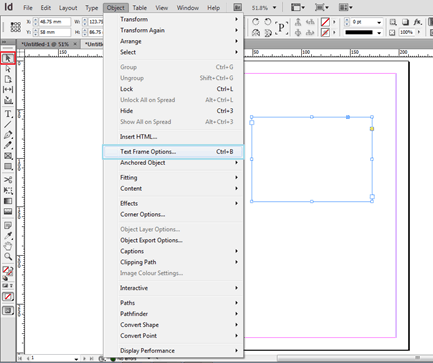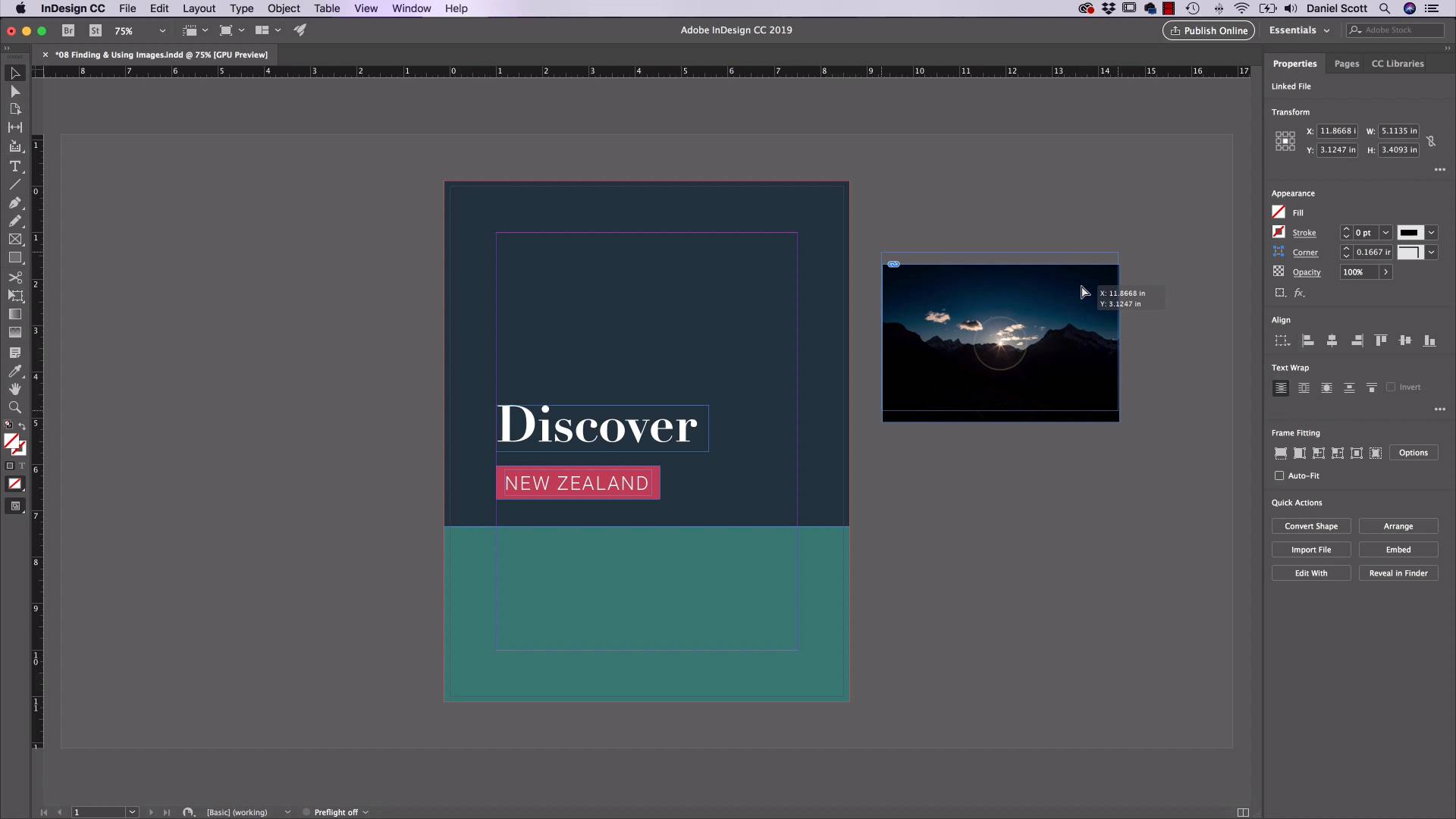

For information on text frames, refer to Creating Text. Before you can place an inline graphic, a text frame must be created. Inline graphics are placed by using the Type Tool. How you place a graphic is initially determined by your choice of either the Selection Tool or the Type Tool. Graphics can be cropped, sized, rotated, and moved in InDesign, but no changes can be made to the graphic itself that must be done in a graphics editing program such as Adobe Photoshop. Below is an example of an inline graphic within a text frame. Inline graphics are appropriate for documentation and reports where the graphic must accompany specific text. The graphic will change position on the page (or may even change text frames) as the text is edited.

As you edit the text, the graphic retains its same position relative to the text, which wraps itself around the graphic. Inline graphics become part of the text block in which they are placed. There are two ways to insert graphics into text in InDesign: independent or inline. This article is based on legacy software. (Archives) InDesign CS3: Working with Inline Graphics (Archives) InDesign CS3: Working with Inline Graphics.Student Expression, Rights & Responsibilities.


 0 kommentar(er)
0 kommentar(er)
